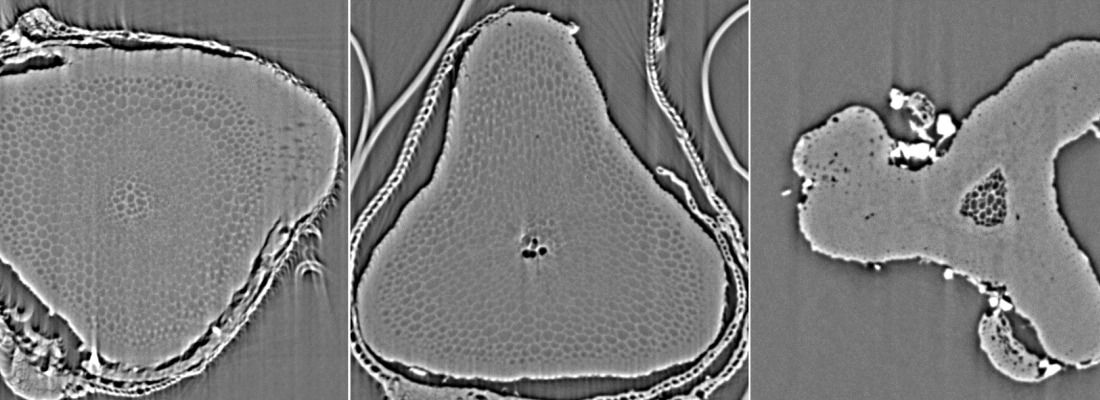Biodiversity Reading time 3 min
Water’s crucial role in the future of our forests
Published on 17 April 2020

How is water managed in the plant kingdom?
The evolution of terrestrial plants through the geological eras has until now been governed by a dogma: trees are what they are thanks to a vascular system that allows them to transport water throughout the entire plant, including within the canopy, where photosynthesis is most efficient. However, INRAE researchers recently demonstrated that moss (a non-vascular species) has a conductive system that functions much like that of trees. Their work shows that this moss has conduits that carry water as efficiently as those of their tree cousins. These vessels do not buckle under high tension and are very resistant to vascular embolism. But how do mosses and trees differ in their water use? The INRAE researchers discovered that the difference lies not in their vascular system but in their leaves. The upper surface of tree leaves captures sunlight for photosynthesis, while the underside that faces the ground is full of pores that allow water to enter depending on the climatic conditions. In mosses, these pores (called stomata) are extremely inefficient in their water use. This means that primitive plants did not evolve into gigantic trees by perfecting their vascular system; rather, it was because their leaves developed an efficient system to regulate water loss. Trees can survive in a much drier atmosphere than mosses, but this ability to adapt may reach its limits when conditions are abnormally dry.
What are the consequences for the future of our forests?
Future climate predictions are unanimous: accumulating CO2 in the air will raise the temperature of the Earth’s surface by the end of the century. How will forests manage this rapid transition? CO2 may have a fertilising effect and hotter temperatures may also stimulate tree growth. But warmer air is also drier, which heightens the risk of drought. The effects of climate change may then be more negative than positive for forests. This is what interested the INRAE researchers, who have put forward a new mathematical model to predict how forests might fare in the future. This model combines the functional and hydraulic mechanisms of trees with the principle of stomatal optimisation. It uses several parameters that have already been studied independently in existing models, such as resistance to vascular embolism. But contrary to those models, the researchers’ new model integrates water loss at tree leaf cuticular level, a non-negligible parameter that increases predicted mortality, especially during heat waves.
This model’s predictions confirm an alarming situation: while forest trees are able to withstand the droughts they have suffered for millennia, they are not equipped to survive major climate change. In such a situation, forest trees will face three possible scenarios: acclimation, adaptation or migration. Acclimation suggests that certain tree characteristics will be modified to withstand rising temperatures. One viable acclimation possibility would be for each individual tree to change its physiology, such as by reducing the surface area of its leaves to mitigate water loss. Adaptation would require forest species to adapt to hotter temperatures through natural selection over several generations. But climate change happens too quickly, which drastically limits adaptation possibilities. Finally, migration involves the literal displacement, whether naturally or assisted, of tree species to make way for species or varieties that are heat resistant in areas where temperatures are quickly rising. For instance, downy and holm oaks are more resistant than oak species found in temperate zones. But these species’ capacities for natural migration are quite limited, and human intervention will likely be required to allow forests to best adapt to higher temperatures and more frequent droughts.
Although forests show natural adaptive capacities, these are still rather limited. Climate change could have a massive impact on forest stability and productivity, which would further reduce their major role in CO2 storage. This shows why it is essential to continue research in this area to improve models and consider evolutionary forces such as cross-species hybridisation to adapt management practices.
|
References Brodribb, T.J., Carriquí, M., Delzon, S. et al. Advanced vascular function discovered in a widespread moss. Nat. Plants 6, 273–279 (2020). https://doi.org/10.1038/s41477-020-0602-x Brodribb, T.J., et al. Hanging by a thread? Forests and Drought. Science vol. 368 no. 6488 261-266 DOI: 10.1126/science.aat7631 |
